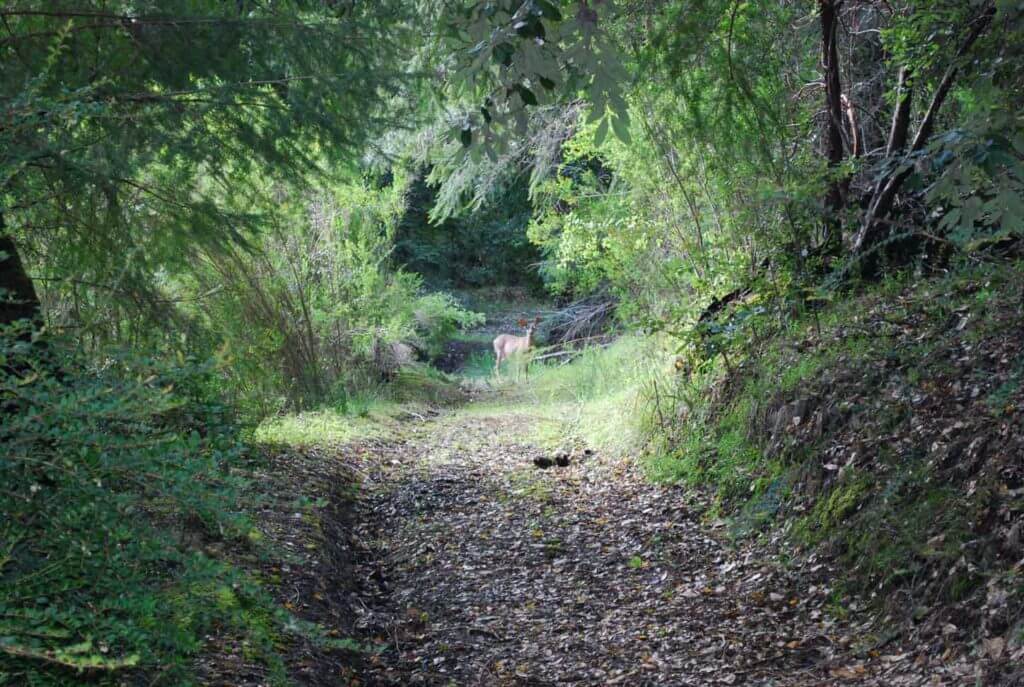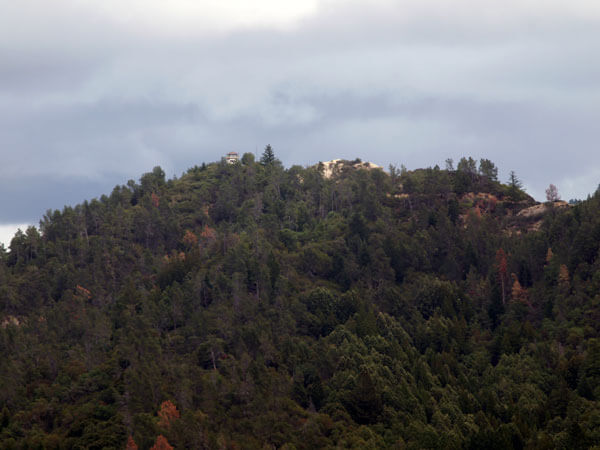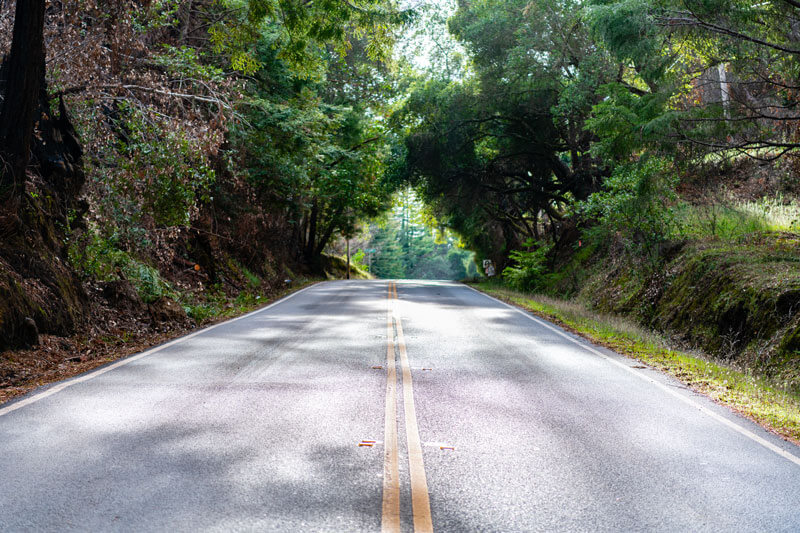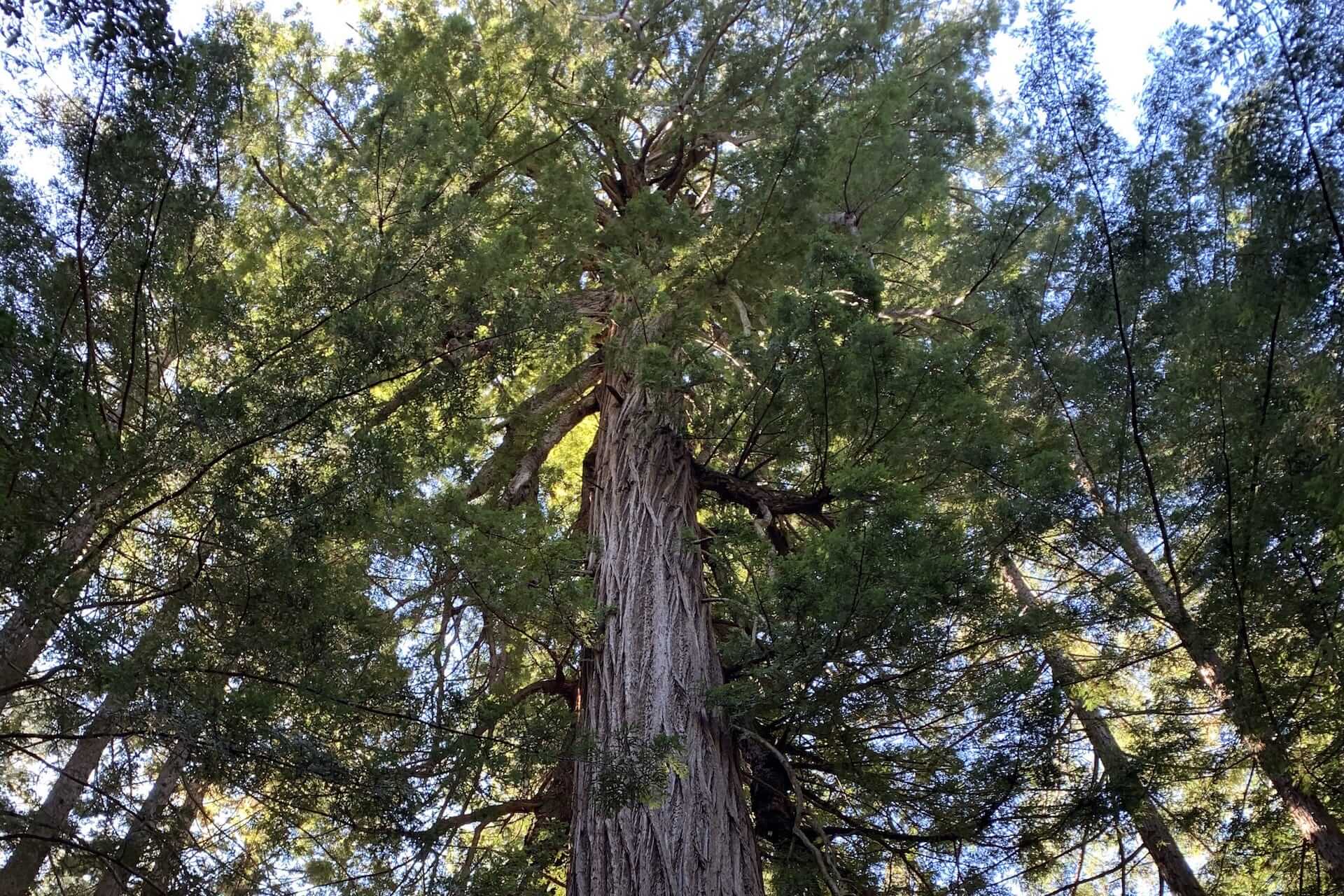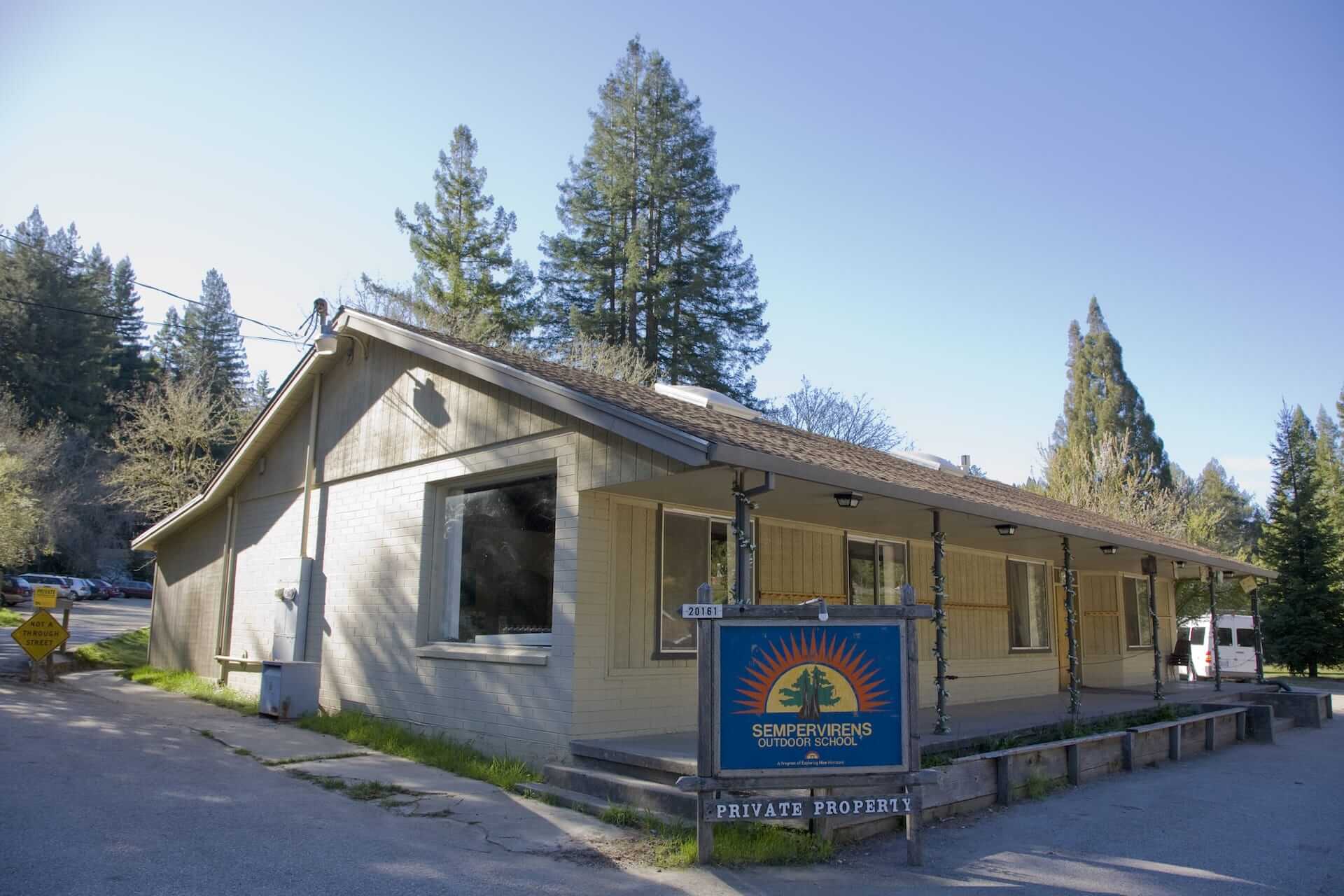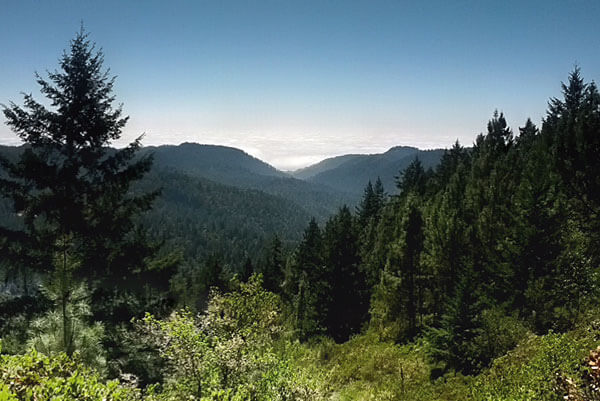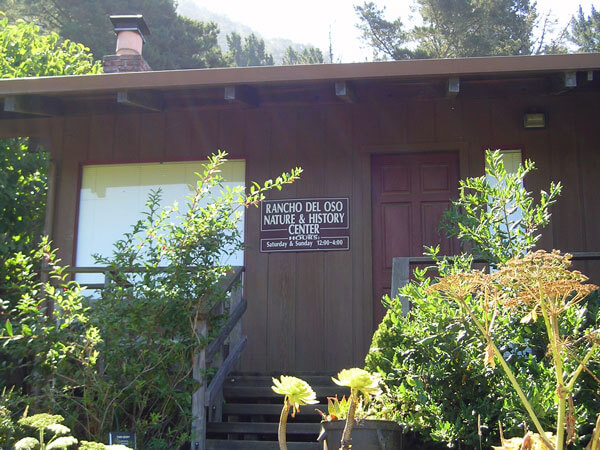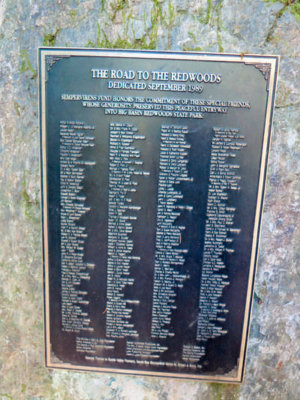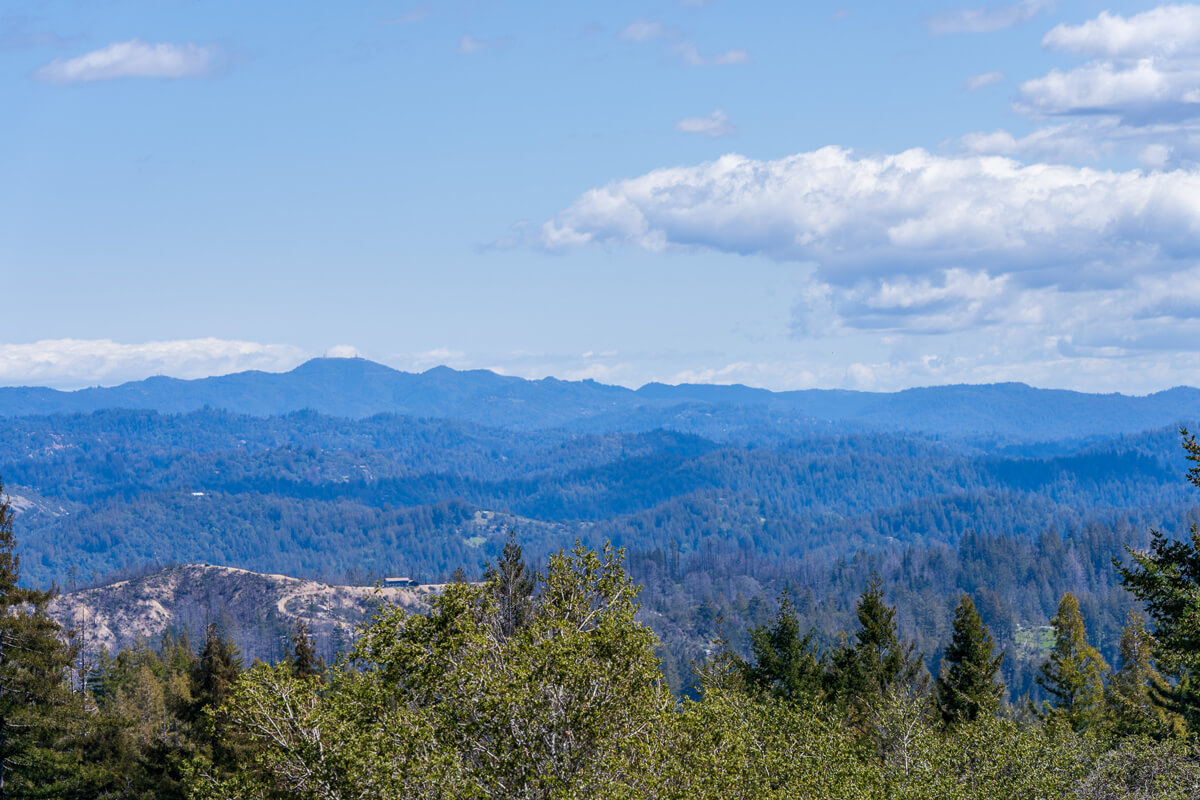The CZU Fire
The 2020 CZU Fire was the most devastating fire ever recorded in the Santa Cruz mountains region. Sparked by lightning and fueld by climate change and bulit up fallen trees and branches, the fire ignited ignited in August and burned through 86,000 acres over a month. Among them were the historic buildings of Big Basin Redwoods State Park and its ancient and beloved coast redwood forests.
Just months after the fire tore across the landscape, Natural Resource Manager Beatrix Jiménez-Helsley visited a nearby forest to explore the changes and signs of hope in the short film A Walk int he Woods: After the Flames.
You can read more about the CZU Fire, and how we and our supporters responded.
Reimagining Big Basin
As the wildfire smoldered in Big Basin, we attempted to answer the tough question of what the future of the park would look like. While we mourned the loss of the Big Basin we knew and loved, we believed there was an opportuntity for California State Parks to reimagine, not just Big Basin, but how all state parks are cared for, structures are built, services are delivered, and people are invited to experience the natural wonders of the state’s parks. We aspire for a new Big Basin that honors its historic past and is designed for the future.
We suggested Big Basin should be:
- Built to last. The rebuilding of Big Basin and the replacement of historic buildings will be a direct response to the lightning sparks that started this recent conflagration. New infrastructure should be light on the land and designed to be resilient and safe when these forests burn again, and again and again.
- Planned for fire. We can build resilience to climate change and wildfire into both our infrastructure and our forest. Fire management practices should be a feature of park management, based on both the best available science and also the traditional Indigenous knowledge that has been ignored for far too long.
- Co-existing with nature AND people. In meeting this moment, Big Basin can, and should, demonstrate how we can coexist successfully with other species. New park planning must reflect how deeply the park is interconnected with the surrounding landscape and nearby communities.
- Safe and welcoming for everyone. Big Basin is a great place to model new recreational experiences that are inclusive and welcoming to all people, reflecting the diversity of our communities and cultural traditions that value nature above all else.
In August 2021, California State Parks launched Reimagining Big Basin, a a multi-year visioning process for Big Basin’s future. You can read more about our vision for Big Basin Redwoods State Park, help State Parks Reimganing Big Basin, and read on about our supporters' ongoing work to protect and connect lands around Big Basin for the future of the park, wildlife, and the forest.
Big Basin is the Heart of the Region’s Parks
Sempervirens Fund’s legacy is rooted in Big Basin, and extends to many nearby parks and destinations. Sempervirens Fund has expanded Big Basin State Park since 1900, purchasing an additional 75 properties and protecting an additional 17,000 acres. As the park has grown, so has the movement to preserve the region’s magnificent natural habitats.
Over the years, nearby parks have been established, and through careful conservation planning and partnerships, are now linked to Big Basin. Nearby parks include Año Nuevo State Park and Castle Rock State Park, which is connected to Big Basin by the magnificent Skyline-to-the-Sea Trail. When natural lands are protected and connected, they increase recreational opportunities, improve wildlife habitat and corridors, and increase the entire landscape's resilience to climate change.
Sempervirens Fund supporters continue to protect lands, like Gateway to Big Basin and the Saddle Mountain Conservation Area, surrounding Big Basin Redwoods State Park to better support its forests, watersheds, and wildlife.
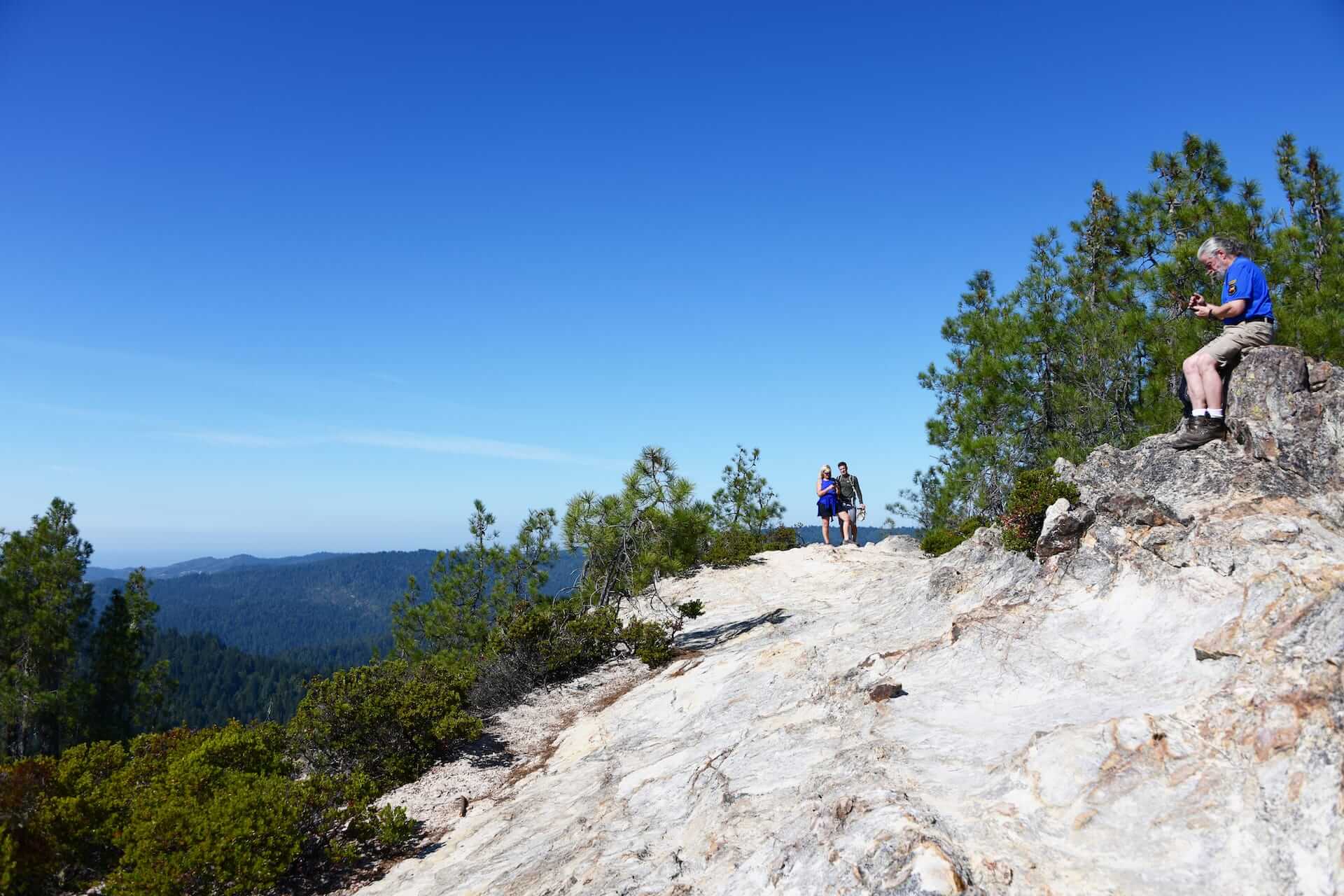
Here are some of the key lands Sempervirens Fund supporters have preserved forever in the Big Basin Redwoods State Park area:
Camp Hammer
Camp Hammer’s nearly 100 acres of redwood forests next to Big Basin Redwoods State Park were protected with a conservation easement in 1991 so it’s biological resources and recreation opportunities can continue to be enjoyed for generations to come.
Eagle Rock
At 2,488 feet above sea level, Eagle Rock on Ben Lomond Mountain is the highest point in its neighborhood of the Santa Cruz Mountains. In 1983, Sempervirens Fund supporters preserved 79 acres with unique rock outcroppings and rare, endemic Santa Cruz cypress on Eagle Rock. The view from this former wildfire lookout is considered well worth the 1,400 foot climb up the trail to see it. Eagle Rock can be enjoyed for generations to come in Little Basin.
Gateway to Big Basin
Once clear-cut and later heaped with debris, the Gateway to Big Basin’s 153-acres of second-growth forest is healthy, laced with creeks, canyons, meadows, and a spring. It is also the scenic setting leading into Big Basin Redwoods State Park. The Gateway's proximity to the state’s oldest park made its precious resources all the more paramount to protect. Read more about Gateway to Big Basin
Little Basin
Little Basin’s 535 acres of coast redwoods and scenic woodlands right next to Big Basin Redwoods State Park were purchased by Sempervirens Fund and Peninsula Open Space Trust from Hewlett Packard in 2007. Today, Little Basin is officially part of the state park providing campgrounds, picnic areas, and miles of hiking trails that connect to Big Basin Redwoods State Park.
Mount McAbee
In the Santa Cruz Mountains, Mount McAbee stands 1,880 feet high over the towering redwood-filled Big Basin. Sempervirens Club supporters preserved the mountain’s first 160-acres in 1924 for Big Basin Redwoods State Park. In 1968, Sempervirens Club members renewed their charter and changed the organization’s name to Sempervirens Fund in response to new development proposals which threatened serious ecological damage to the Waddell Creek Watershed, Big Basin’s ecosystem, and the entire region. While working to protect the watershed and Big Basin, they preserved another 365-acres on Mount McAbee and created Castle Rock State Park. Today, Mount McAbee, and much of the land viewed from its Overlook out to Waddell Beach and the Pacific Ocean, are protected in Big Basin Redwoods State Park for people and wildlife to enjoy forever.
Rancho Del Oso Nature and History Center
In 1976, Sempervirens Fund supporters preserved 1,581-acres for Big Basin Redwoods State Park including part of the Hoover Ranch which is now the Rancho del Oso Nature and History Center and extended the Skyline-to-the-Sea Trail to the Pacific Ocean at Waddell State Beach. In 1985, Sempervirens Fund added 50 more acres to the Rancho del Oso Nature and History Center. The Rancho Del Oso Nature and History Center interprets the diversity of habitats in this part of Big Basin Redwoods State Park as it transitions from redwood forests to put to the Pacific Ocean. Although closed for damage caused by the 2020 CZU Lightning Fires, both Rancho del Oso Nature and History Center buildings survived and are the only educational buildings left standing in Big Basin State Park.
Road to the Redwoods
The now well-traveled entrance to Big Basin Redwoods State Park went through privately owned properties until Sempervirens Fund supporters preserved three properties totaling more than 33-acres of land leading into the park known as the “Road to the Redwoods” from 1988 to 1989. Sempervirens Fund continues to protect and connect land near Big Basin to support healthy forests, wildlife habitat, and recreation opportunities for people to experience the majestic redwoods and wildlands of the Santa Cruz Mountains.
Saddle Mountain Conservation Area
In 1999, Sempervirens Fund supporters protected the first piece of land in the Saddle Mountain Conservation Area which was added to Big Basin Redwoods State Park in the early 2000's. We and our supporters continue to protect land in this area today that is integral to the health of the forest, Boulder Creek Watershed, and the future of Big Basin Redwoods State Park as California State Parks is Reimagining Big Basin after the 2020 CZU Fire tore through the park. Read more about Saddle Mountain Conservation Area
